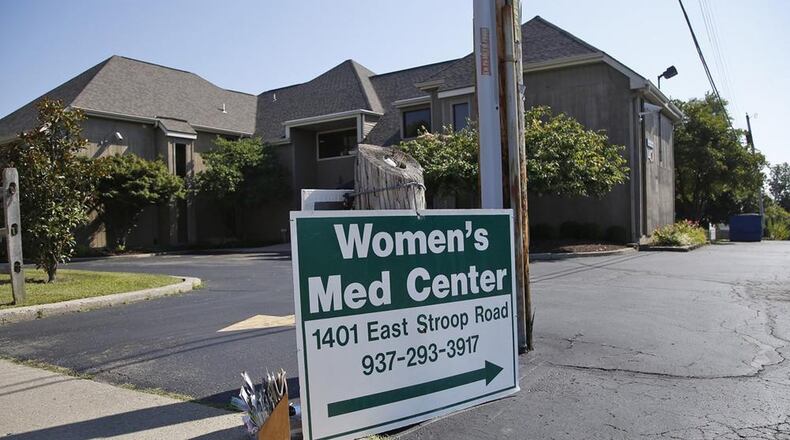But on Wednesday, Hamilton County Common Pleas Judge Christian Jenkins issued a 14-day restraining order on Ohio’s law that bans abortions upon detection of a fetal heartbeat. This stemmed from a lawsuit filed by abortion providers in the state.
Ohio Attorney General Dave Yost said his office is consulting with Gov. Mike DeWine and his administration to decide their next steps.
“I think this whole debate we are having, finally, 50 years after the Supreme Court took it away from the public deliberation process, is a good one to have,” Yost said.
Abortion providers and their defenders have said the six-week ban created many hardships. In Jenkins’ order, the judge noted several affidavits from healthcare professionals who relayed examples of women battling medical issues who were denied abortions.
Included in the ruling was an example from an affidavit written by Aeran Trick, an licensed practical nurse and operations manager for Women’s Med Center in Kettering.
“I have personally witnessed the devastating harms that SB 23 (the Heartbeat Bill) is causing our patients and pregnant Ohioans desperately seeking abortion care,” Trick wrote. “For example, on Monday, June 27, WMCD saw a 37-year-old woman for her statutorily-mandated pre-procedure appointment. This patient has stage III melanoma and was told by her doctors that they cannot provide the treatment she needs until her pregnancy is terminated. Because our medical staff detected fetal heart tones during her examination, she had to travel to Indiana for her procedure.
“Upon learning that she would need to travel out of state to have her abortion, the patient broke down and cried inconsolably despite the attempts of multiple staff members, including myself, to comfort her.”
The judge’s ruling also notes other cases like a 25-year-old who needed chemotherapy but could not obtain it after discovering she was pregnant. That account was from Dr. Sharon Liner, the medical director of Planned Parenthood Southwest Ohio Region.
“Her medical provider was unwilling to provide documentation to support an exception to S.B. 23, so her only choice other than foregoing chemotherapy was to travel out of state for medical care,” the ruling says.
The judge’s ruling says that the Ohio Heartbeat bill likely violates Ohio’s Constitution regardless of the U.S. Supreme Court ruling.
Ohio Right to Life President Michael Gonidakis said, “We are more than confident that the Heartbeat Law will go back into effect relatively soon. Further, we can assure pro-life Ohio that in the near future Ohio will become abortion-free, regardless of what this local judge ruled.”
Yost said the current law does have exceptions that allow abortions to protect the life of the mother and her health. He expects lawmakers to review the issue soon.
“So I don’t think that all the issues that have been raised in court are in fact valid or prohibited by the law, but I expect probably there will be a move in the general assembly to bring some additional clarity to the law and what those expectations mean and how they apply,” he said.
Dr. Martin Haskell, the medical director of Women’s Med Group Professional Corporation, which owns the Women’s Med Center in Kettering, wrote in an affidavit that the clinic has turned away many patients since the Heartbeat law went into place because of the advanced stage of their pregnancies. He said 77 abortions were performed at WMCD in July 2022, which was about a 79% decrease from its average of 372 patients per month.
“I have seen first-hand the devastating infections, complications, sterility, and even death that resulted from illegal abortions and self-induced abortions prior to 1973 when abortions were legalized in this county,” Haskell wrote. “Though some patients may continue to access abortions in other states, I am concerned that some patients will be forced to carry to term and others may resort to desperate measures and attempt to obtain abortions under conditions that are not safe.”


